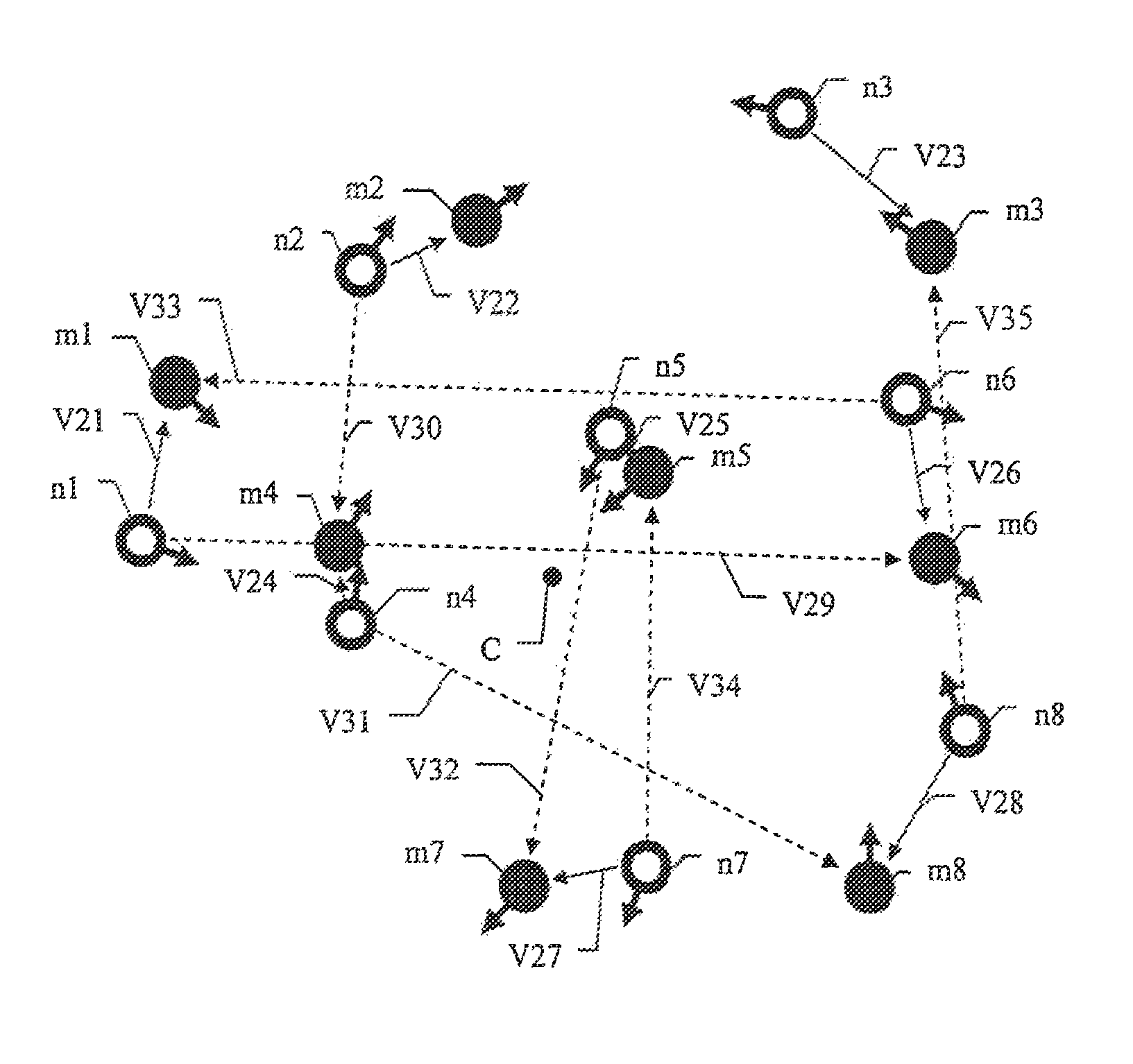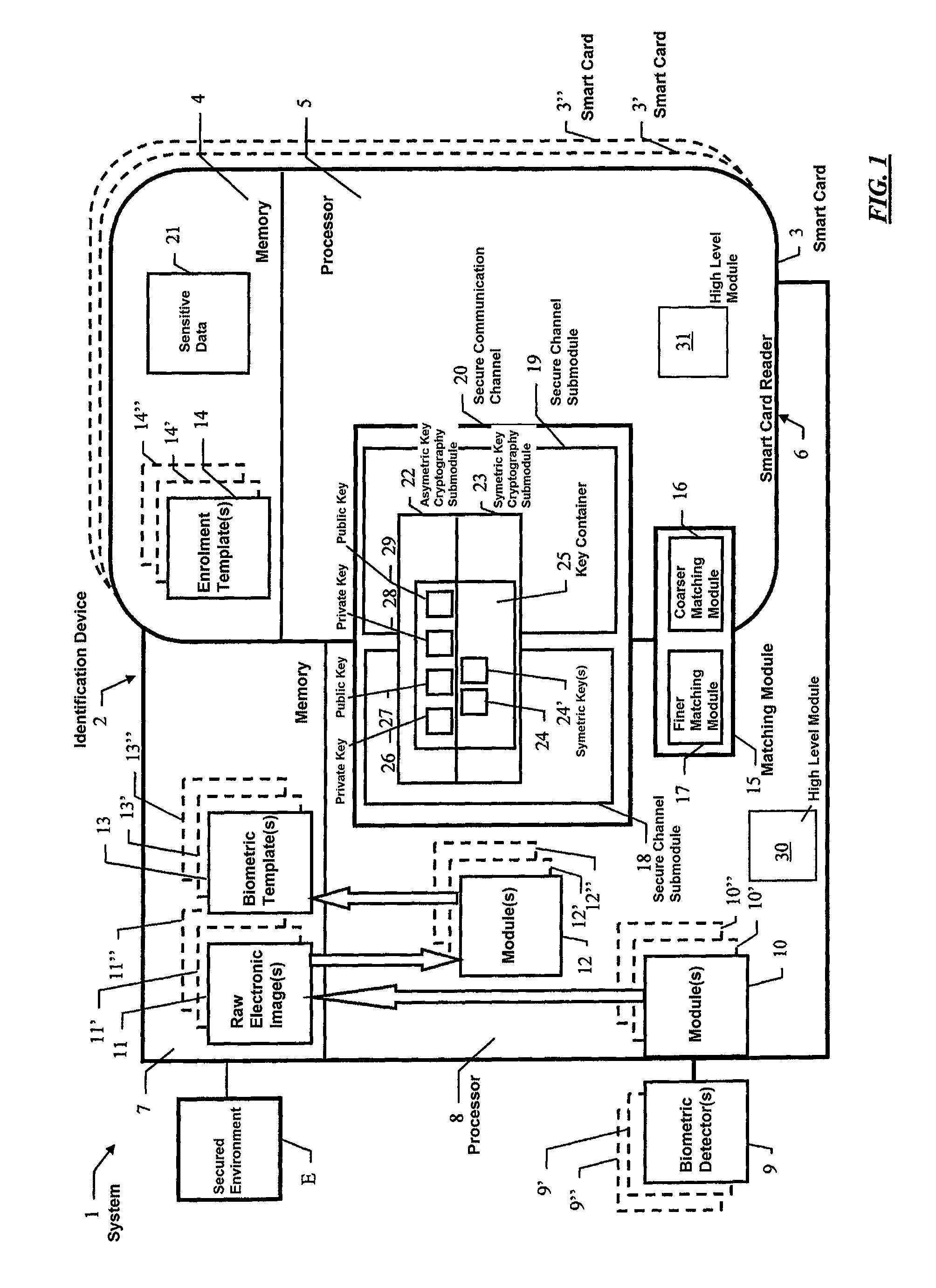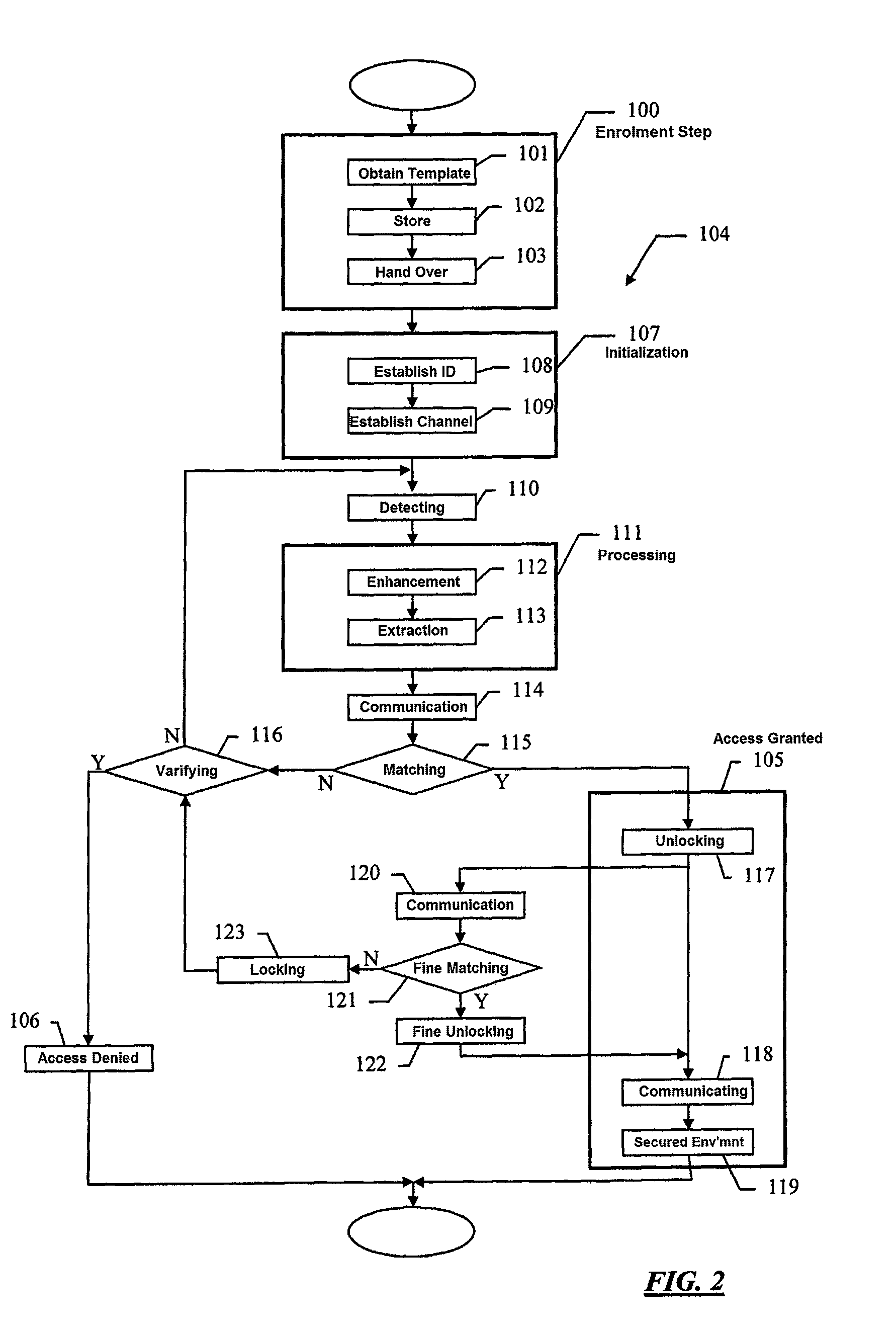Biometrics based identification
- Summary
- Abstract
- Description
- Claims
- Application Information
AI Technical Summary
Benefits of technology
Problems solved by technology
Method used
Image
Examples
Embodiment Construction
[0046]In FIG. 1 a block diagram of a preferred embodiment of a biometrics based identification system 1 according to the invention is shown.
[0047]System 1 comprises a biometrics based identification device 2 and at least one portable data carrier with processor 3, 3′, 3″ . . . , such as a smart card of the microprocessor card type, e.g., a SIM or USIM. For the sake of brevity, portable data carrier with processor 3 will be often referred to as smart card 3 hereinafter. Smart card 3 comprises a memory 4 and a processor 5.
[0048]Biometrics based identification device 2 is part of, or capable of electronically communicating with, a secured environment E, to grant or deny access to secured environment E to a purported user upon identification through the biometrics based identification system 1.
[0049]Secured environment E can be any of a variety of environments, e.g. a computer or computer network comprising sensitive data such as personal data or sensitive applications such as financial...
PUM
 Login to View More
Login to View More Abstract
Description
Claims
Application Information
 Login to View More
Login to View More - R&D Engineer
- R&D Manager
- IP Professional
- Industry Leading Data Capabilities
- Powerful AI technology
- Patent DNA Extraction
Browse by: Latest US Patents, China's latest patents, Technical Efficacy Thesaurus, Application Domain, Technology Topic, Popular Technical Reports.
© 2024 PatSnap. All rights reserved.Legal|Privacy policy|Modern Slavery Act Transparency Statement|Sitemap|About US| Contact US: help@patsnap.com










